
Each month, the Paste staff brings you a look at the best new selections from The Criterion Collection. Much beloved by casual fans and cinephiles alike, The Criterion Collection has for over three decades presented special editions of important classic and contemporary films. You can explore the complete collection here. In the meantime, here are our top picks for the month of August:
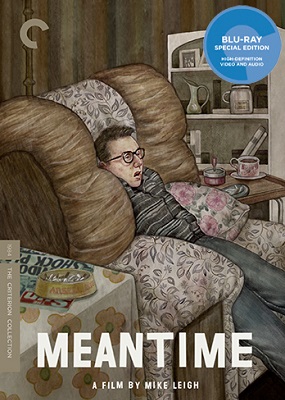 Meantime
Meantime
Director: Mike Leigh
Year: 1984
When Mike Leigh’s name is mentioned, cinephiles immediately think of two things: strikingly natural performances from his actors, and low-key but honest slice-of-life exploration of the British working class. Meantime, Leigh’s 1984 TV movie about the socioeconomic struggles of two hapless brothers on the dole (welfare, as us yanks would call it), is, apart from representing his creative peak on the TV format, a godsend for the section of Leigh fans who only want to experience the pure and raw representation of those two qualities, undiluted by a traditional plot or a story structure. Leigh’s goal is to capture how the brothers (Tim Roth and Phil Daniels) are dealing with their economic troubles on a day-to-day basis, in a system that keeps them depressed, as they kill time at the pub and try to make any money possible from any resource they can get their hands on. Roth is especially magnetic as the meek and nerdy brother, a role that proves his versatility, since he had previously came to prominence as a boorish skinhead in Alan Clarke’s iconic 1982 TV film, Made in Britain. It’s interesting that a similar skinhead role in Meantime is filled by another legend, Gary Oldman, in his first major film role.
Meantime was shot on 16mm, using a heavily improvisational style, which meant that a lot of setups were shot on the fly without much room for preparation. This gives the film a sense of natural immediacy, even though some of the scenes end up looking a bit too grainy and dark. Criterion’s 1080p transfer captures that look perfectly, without trying to scrub the grain for a cleaner digital look. The impressive amount of extras consists mostly of new interviews with Leigh, DP Roger Pratt, as well as a 2007 interview with Tim Roth. —Oktay Ege Kozak
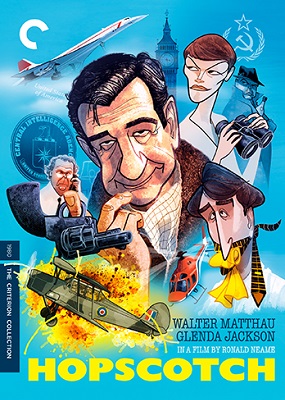 Hopscotch
Hopscotch
Director: Ronald Neame
Year: 1980
Hopscotch is a film of simple pleasures: Glenda Jackson’s perfectly timed comic barbs, Ronald Neame’s assured, effortless direction, Ned Beatty’s boorish villainy. But the best delight the movie has to offer is its star, Walter Matthau, humming, whistling, trilling his way through a sharp riff on spy movies from the era preceding it. To a point, he’s playing himself: schlubby and amiable, a man who play-acts an abiding disconnect from the world around him as misdirection. Matthau’s character, CIA field agent Miles Kendig, is any number of steps ahead of his peers and pursuers alike; he’s leagues beyond the latter, a few feet ahead of the former. Telling, though, in either case is that he always has a song in his heart and on his lips. He’s the most unassuming of spies, in other words, and this is what makes him, and Hopscotch, such a treasure trove of ’80s cinema, flowing over with warmth, good humor, a few indelible characters from a few of cinema’s most indelible actors, and Neame’s no-nonsense approach to filmmaking. It’s Jackson, in conversation with Matthau about the virtues of good wine, drops the best summary of what good movies are made of at the same time: They’re the product of “skill, knowledge, and in many cases, love.” —Andy Crump
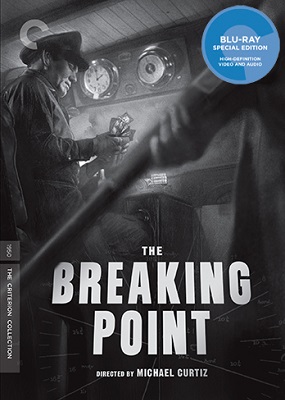 The Breaking Point
The Breaking Point
Year: 1950
Director: Michael Curtiz
One watches The Breaking Point and wonders, throughout all of its meticulously pieced 90-something minutes—those of us watching aren’t expected to be as precise as director Michael Curtiz with our timing, with our intuitive understanding of the perfect amount of time—why this isn’t more readily a part of popular discussions about the best-crafted American movies of the past 100 years. There’s no real scholarship behind such a thought; it’s only a feeling, that more should be said about this movie, more of its marrow studied and savored, more of its DNA understood. Another attempt at an adaptation of Ernest Hemingway’s To Have and Have Not, the film follows Captain Harry Morgan (John Garfield) as his domestic life sinks into increasingly dire and compromising means of keeping his family afloat, his trajectory simple but rarely unearned in its descent towards an inevitable wreck. “It captures film noir’s essential reason for being, as a response to postwar disillusionment,” writes critic Stephanie Zacharek in an essay included in Criterion’s release of the film, and it’s hard to deny that The Breaking Point is anything but essential: Curtiz (known mostly for Casablanca) guides each scene with brilliant economy and an unparalleled sense of structure, both physically and narratively. Such skill is laid out in painstaking detail by Tony Zhou and Taylor Ramos in a video essay included with this packaging, but watching the film works well enough in grasping just how elementally Curtiz wielded his storytelling abilities. It all, for lack of a better way of describing anything, just feels right, which in the context of the film, is so ironic it hurts. Couple that with an absolutely heartbreaking closing shot, and The Breaking Point can’t help but devastate. —Dom Sinacola
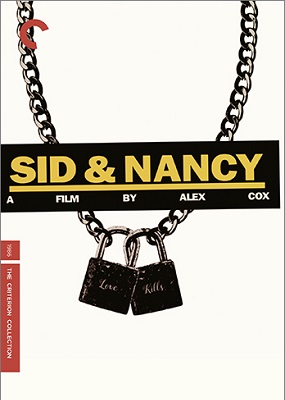 Sid & Nancy
Sid & Nancy
Director: Alex Cox
Year: 1986
More than 30 years after Alex Cox’s film, and nearly 40 after the events it portrays, Sid & Nancy brings the modern viewer a more potent take on punk rock than most history books. (That doesn’t excuse your slacker college music history teacher from showing movies instead of teaching, though.) It’s also a pretty amazing take on doomed, destructive love. Super-charged further thanks to the performances of Gary Oldman (oft-lauded) and Chloe Webb (whose turn as Nancy Spungen deserves as much or more credit than her co-star). Along with its 4K restoration, Criterion provides fans of the music, the scene, Oldman or just of crazy-ass “love” affairs with ample bonus materials, including interviews with the principals, plenty of media featuring the pair, and the not-as-inevitable-back-then-as-now documentary on the making of Sid & Nancy. Will all this help you truly understand the truth of any of it? Probably not, but who goes to movies for the fact? —Michael Burgin
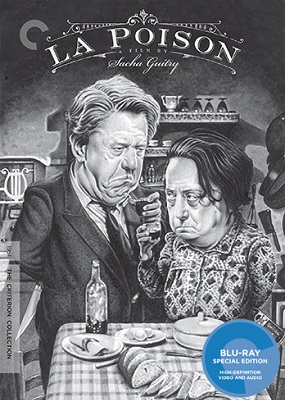 La poison
La poison
Director: Sacha Guitry
Year: 1951
Before turning his attention to filmmaking, Sasha Guitry was already a bit of a legend in the theatre world as one of the most groundbreaking directors of the medium. When Guitry decided to adapt some of his plays to the silver screen, his motivation at first was to basically “record” the play on celluloid, having his actors read through entire scenes while a simple long shot camera setup captured the action. However, as he began to play around with the free range of creative possibilities that movies had to offer, he gradually developed his own unique visual language, which in turn resulted in some of the most beloved and bold films in French cinema until his death in 1957.
La poison, his 1951 biting satire of the corrupt French legal system, represents the perfect synergy of his theatrical and cinematic sides. He opens his film by introducing his cast to the audience with utmost geniality and gratitude; priming us for the filmed play we’re about to watch. Yet at the same time, he uses the cinematic language to his full advantage, witnessed primarily by a sequence where he intercuts between “serious” courtroom footage and children teasingly reenacting what they believe go on during the trial, which allows Guitry to cleverly mock the many follies of the system.
Legendary French actor Michel Simon, whose appeal heavily rests on his uniquely expressive personality, plays a husband who’s so miserable with his loveless marriage, that he pretends to have killed his wife to an attorney so he can find out the perfect way to get away with the murder, then uses that advice to actually do away with the old ball-in-chain. Of course this creates a moral conundrum for the lawyer, who used to be proud of his ability to get even his most obviously guilty murderer clients acquittals, but now has to contend with the fact that some clever schmuck used his advice to build a foolproof case before committing the dastardly act.La poison’s many twists and turns create one of the best satires of ’50s French cinema.
Criterion’s 1080p transfer is as clean as it gets, although some of the digital noise reduction takes away from the organic grain of the original source. The extras are plentiful, with two one-hour-long documentaries about Guitry’s career, and a loving tribute from current art house darling Olivier Assayas. —Oktay Ege Kozak